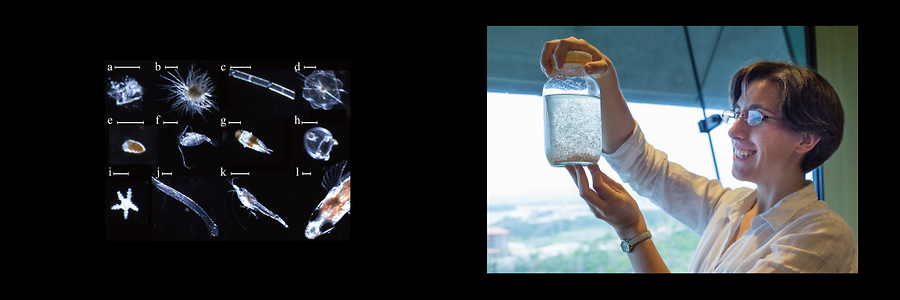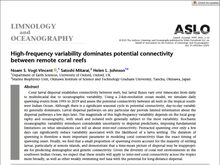Marine Biophysics (Mitarai) Unit
An Overview of the Marine Biophysics Unit
Background
The Marine Biophysics Unit (MBU) was established at OIST in 2009, because of Okinawa’s ideal geographic position and access to the outstanding research resources of OIST. Okinawa’s beautiful coral reefs lie at the northern boundary of the Pacific Ocean region with the highest marine biodiversity, exposed to large seasonal variations in water temperature. Okinawa is located close to hydrothermal vent fields that support ecosystems of endemic species that do not depend on photosynthesis. It is also situated in “Typhoon Alley”, the region with the most frequent and fully-developed tropical cyclones on Earth. The MBU takes advantage of these natural resources to study the interaction of physical and biological processes in the ocean.
Biophysical Coupling in the Ocean
The MBU investigates biophysical coupling in the ocean at varying spatial scales, from micrometers for microbes to thousands of kilometers for biogeographic events, by incorporating physical, mathematical, and biological approaches. The physical oceanographic resources and expertise at the MBU, coupled with tools in marine ecology, molecular biology, and fluid dynamics, provide a unique laboratory system for studying oceanographic processes, influenced by powerful disturbances and climatic forcings. By quantifying the interactions of physical and biological processes in the ocean, our research seeks to protect them from human-induced changes that will otherwise lead to the collapse of these vulnerable ecosystems globally.
Membership
The MBU supports students and postdocs with a variety of backgrounds; however, physical oceanography and fluid dynamics are fundamental to all of the Unit’s research. In particular, MBU welcomes students and postdocs who are interested in employing physical and mathematical approaches to understand marine ecological systems. Students and postdocs are expected to have the intellectual curiosity, capacity, and motivation to design and execute research on their own initiative, with guidance and assistance from supervisors, advisors, peers, and collaborators.Thanks to generous subsidy funding at OIST, the MBU can support 2 or 3 students. Students who are interested in topics beyond Professor Mitarai’s expertise may be accepted if an external expert agrees to serve officially as a co-supervisor of the student’s Ph.D. research.
Now Hiring
Postdoctoral Researchers
-
Postdoctoral scholar in larval dispersal modeling (English, Japanese)Filled -
Postdoctoral scholar in ocean modeling (English, Japanese)Filled -
Postdoctoral scholar in coastal oceanography (English, Japanese)Filled -
Postdoctoral scholar in ocean-atmosphere interactions (English, Japanese)Filled
Research Technicians
-
Research technician in ocean observations (Japanese)Filled
Part-time Research Assistants
Latest Posts
-
Welcome Jakob
December 7, 2023. Jakob joined MBU as a research intern.
Noam's new paper
November 30, 2023. Noam's new paper has been published online in Limnology and Oceanography.
Welcome Tunggul
November 1, 2023. Tunggul joined the MBU as a postdoc.







